When we first came to our property we were amazed by the rainforest, the figs, orchids, butterflies, giant birds nest ferns and an astounding diversity of native wildlife – it was our own little utopia. After the floods of January 2011 our beautiful rainforest stream was transformed to an open, shallow waterway where large trees, boulders, bridges and all manner of soil and vegetation were stripped from the creek and the adjoining banks. Our family was shocked and upset by the transformation and devastation.
Our greatest sorrow was for the wildlife that had suffered including the missing platypus that once resided in the creek. The platypus’ homes were destroyed and lost with whole banks being washed away and food sources scoured out and replaced with thick silt up to six feet deep coming down from the restoration works occurring along the railway line. We pondered how the platypus could possibly re-colonise from further downstream where they had to cross roads and culverts, and travel through a landscape that had been so dramatically transformed.
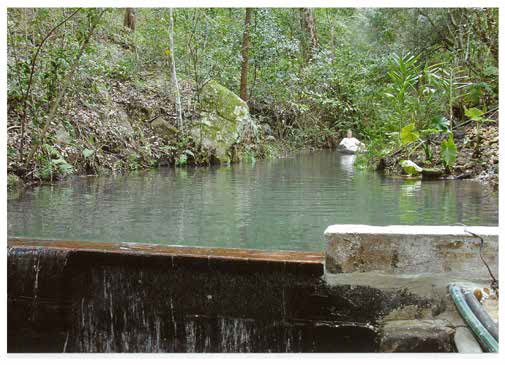
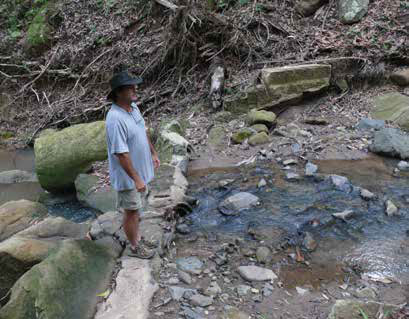
Before and after the flood. Left photo shows Murphy’s Creek in October 2008. Right photo shows Michael standing on that same small weir in February 2012 after the devastating floods of 2011.
Since January 2011 our family has worked to re-establish the pools and riffles within the creek, remove chemicals, asbestos, car bodies and all manner of rubbish. We have also worked to stabilise landslips and creek banks, revegetate the banks of the waterway, monitor water quality and expand our weed management to a whole new suite of weeds.
Current and future management issues relate to ongoing stabilisation, revegetation, water quality, weed control and the impacts of encroaching high- density housing development in adjoining escarpment areas and infrastructure works such as railways and roads.
Much of the creek bank and landslip stabilisation, tree planting, weed control and water monitoring efforts have been undertaken by ourselves. We have received some funding from a SEQ Catchments e-Tree grant through the Lockyer Valley Regional Council Land for Wildlife program during 2012, which gave us a start on the tree planting and these plantings are powering along, some were over two meters high after just 8 months. We have also successfully received some funding from SEQ Catchments for waterway restoration. With this funding we are establishing more plantings sites with erosion control matting and continuing with our weed control efforts.
The creek with its curves, pools and riffles is starting to take shape, and though the creek continues to move with each significant rainfall event we feel that these movements are becoming less dramatic over time. With the rainfall events of January and February 2013 the creek movements removed or scoured-out some of the still establishing plants that we had planted along the waterway and the creek banks continued to slip and move.
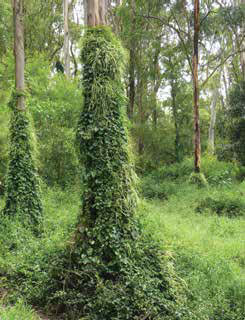
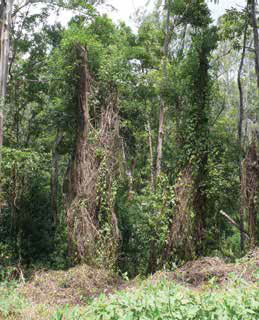
Weed control has been an ongoing management issue. We have a number of serious weeds on our property including cat’s claw, privet and lantana. Since January 2011 we have received a whole new scope of weeds that we never had before including Madeira Vine, Camphor Laurel, Canna Lily, Asian Watercress and other aquatic weeds.
Being in the upper catchment of the Lockyer Valley our weed control and waterway stabilisation efforts are important for us here on our property and also for the benefit of the local native plants and wildlife, as well as for the health of those downstream, all the way to Moreton Bay. We are like gatekeepers for the spread of weeds throughout the Lockyer Valley and beyond as not only are we at the headwaters of the catchment we are also at the junction of two waterways coming o the escarpment. Likewise our property also serves as a source of seed dispersal for native plants along our waterway, the Lockyer Valley and further afield.
Since January 2011 we have noticed that the species of native animals and their associated movements have also changed. The platypus were gone and we observed that the Richmond Birdwing butterfly, the Blue Triangle butterfly, turtles, certain species of dragon flies, echidnas, black cockatoos and a variety of water life such as eels, yabbies, crayfish and may fly larvae had all disappeared. However over the last six months we have been noticing a return of some black cockatoos as well as a steady increase in aquatic life, much of this being the food source for the platypus.
During early March of 2013 we were overjoyed at the sighting of a returning platypus in our creek. This sighting raised our hopes and energy levels that the work we have been doing has not been in vain and reminds us that local wildlife rely upon us and our ongoing commitment and efforts to retain their homes and food.
On understanding that our natural environment forms the base and structure of healthy lives and stable economics, and that all of the interconnected life on Earth has a role and purpose, we will continue to strive to achieve our goals of stabilising and restoring our local waterway. Through our local Land for Wildlife community we know that we are not alone in our dreams and efforts and we offer our joy and hopes to those of you who are also working towards the same goal.
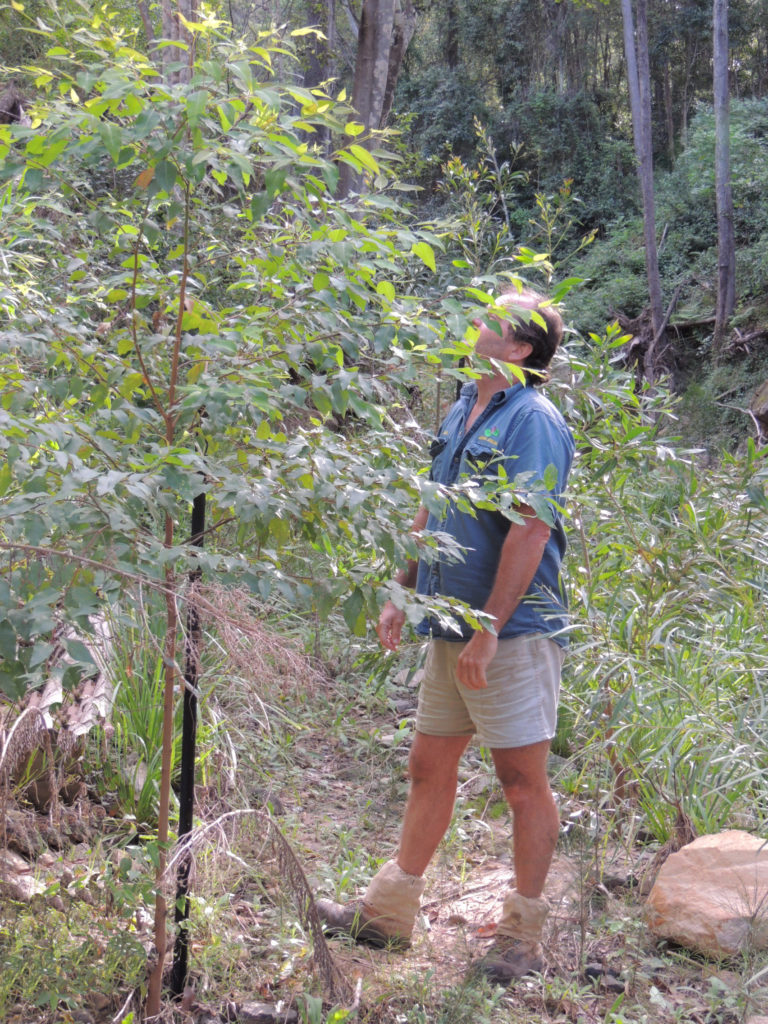
Michael stands next to a 2 metre high seedling that he planted only 8 months prior to this photo being taken.
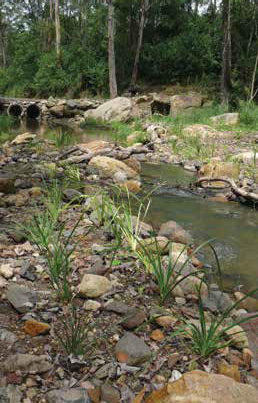
Significant earthworks and in-stream planting was done by Michael and his family to stabilise Murphy’s Creek.
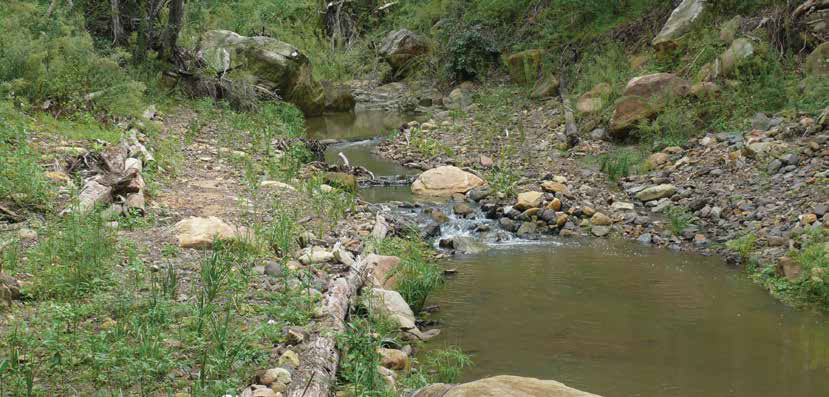
As part of the reconstruction and stabilisation of the creek, Michael embedded large logs in the lower banks and re-created riffles (shallow rocky areas) where platypus search for invertebrates to eat. These reconstructed areas survived well in the Australia Day floods of 2013.
Article by Michael Hare Land for Wildlife member Murphy’s Creek, Lockyer Valley
View Full Newsletter
